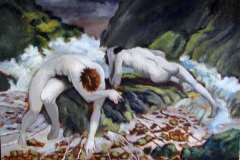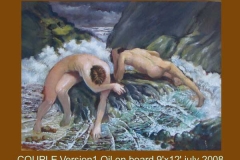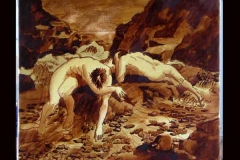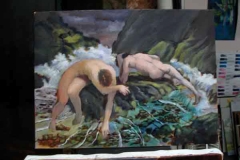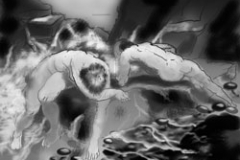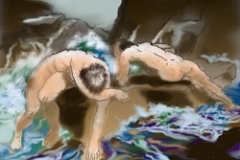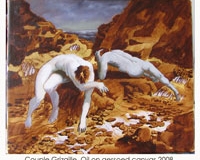Its amazing how long it can take for the penny to drop!
Rubens’ use of the neutral gray is forced on him by his substitution of warm shadows at first instead of the cool verdaccio of the Italians. They arrived at a dynamic mix caused by the warm and translucent midtones scumbled over the verdaccio, which they then warmed in the deepest darks with a transparent glaze. Rubens glazed late in the process too, but he BEGAN with them. That is why he used a neutral gray on the turn between the deep shadows and the midtones. He couldnt get them any other way.
Technically, this meant his painting could proceed rapidly, especially when his midtone ochre was already dry , having been applied as the imprimatura,and was frequently left as is. The lights could be applied without mixing them with the greys.
All this did not prevent him from subsequent glazes and scumbles when the underlayers were dry, and his medium ( turpentine and resin?) would have dried very quickly. Even the umbers and ochres and mars black used in the initial drawing and shadows were actually drying agents (siccatives) and were applied extraordinarily thin. And today we shy away from lead white ( Flake and Cremnitz). These too are very fast drying.
After a good nights sleep, all your work the previous day would be pretty well dry enough to apply a layer of medium( turps, resin, and stand or sun thickened oil), into which work would proceed, producing that “enamel” look. Oh yeah, and the old masters used soft brushes and VERY thin paint, even in the impasto lights. Rembrandt excepted!
Its a historical (not to be confused with “natural” or any other kind of “progression” ) sequence from Florentine chiaroscuro to Caravaggios spotlit dramas and on to Rubens’ assimilation of venetian oil technique. It bears repeating that “truth to nature” in the French academic sense was not an aim of earlier art. So the arguments about “relative” versus “absolute” tones is truly…..well, Academic!
